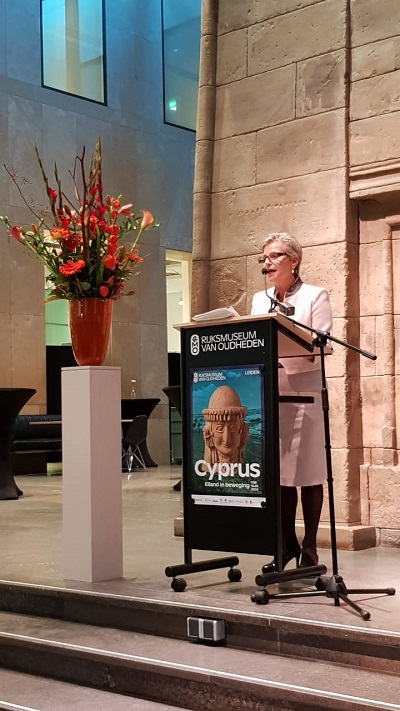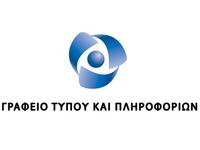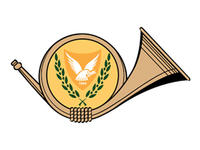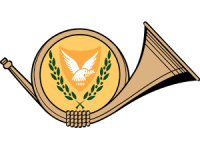Press Releases

10-10-2019 21:52
Address by the MTCW, Ms Vassiliki Anastassiadou, at the opening of the exhibition: “Cyprus: A dynamic Island” at the Dutch National Museum of Antiquities
It is with feelings of joy, heightened emotion and pride that I stand before you today at the official opening of this extremely important exhibition titled Cyprus: A Dynamic Island at the Dutch National Museum of Antiquities.
It is universally agreed that a country’s history and cultural heritage are amongst the most important factors that shape both its relations with the outside world and its internal development. Cyprus’ cultural heritage dates back to at least eleven thousand years. Its geographical position, between East and West, has determined both its historical course and its material culture. Its setting at the crossroad of vital sea routes made the island a melting pot of cultures, an extremely important commercial centre but at the same time, a land much fought for by conquerors.
Although to this day Cyprus suffers as a result of its strategic location, at the same time, it has greatly benefited from its intense interaction with a diversity of cultures and this is certainly reflected on its cultural heritage, both tangible and intangible.
The notion of movement, which is the central theme of this exhibition of over 400 exhibits related to the archaeology of Cyprus, highlights to the general public the cultural dynamics and distinctive styles of the archaeological material culture of Cyprus. At the same time the exhibition touches upon issues relating to every-day life and activities in antiquity as well as the body and personal identity in ancient times.
The Department of Antiquities of the Ministry of Transport, Communications and Works, which is the competent authority responsible for the management of Cyprus’ archaeological heritage, constitutes the main source of the objects loaned for this exhibition. Over 300 important antiquities from the exhibitions and storerooms of the Cyprus Museum, as well as from the island’s District and Local archaeological museums and from private institutions and collections, have been selected and loaned in order to illuminate the island’s multifaceted history. Many of these antiquities constitute highlight objects in our permanent museum collections and others are being shown to the public for the first time ever. Last but not least, the impressive life-size terracotta statues from the famous sanctuary at Agia Irini, now exhibited in the Swedish National Museums of World Culture, constitute an extremely important addition to the exhibition.
Our island’s rich and varied natural heritage is also highlighted in this exhibition, through the impressive artistic landscape photographs, which were especially taken for the purposes of this exhibition and which act as an exquisite backdrop to the antiquities. In addition, our Netherlands colleagues have chosen to enhance the archaeological exhibition with the work of exceptionally talented and renowned contemporary artists, whose work is inspired by ancient Cyprus, such as Bastienne Kramer and Samantha Thole, as well as Cypriot-born famous designer, Michael Anastassiades.
The Dutch public, has always had the opportunity to admire Cypriot antiquities in various museums in the Netherlands. Also, Dutch archaeologists have always been welcome by the Department of Antiquities to study and work in Cypriot archaeology. A good example of this cooperation is the archaeological excavations conducted by the University of Leiden, in collaboration with the Department of Antiquities, at the important Chalcolithic site of Chlorakas-Palloures in the Pafos District, on the western coast of Cyprus. This site, which has greatly enhanced our knowledge on the Chalcolithic period and has yielded important architectural remains and moveable objects, including the first metal axe known to date from Cyprus.
This is however, the first time that such a rich and diverse collection of Cypriot antiquities has left Cyprus to be exhibited in the Netherlands and the largest in number collection everloaned abroad by the Cyprus Department of Antiquities. We are especially honored that this collection is organized and hosted by such a reputable Museum, the Dutch National Museum of Antiquities. This Museum boasts a long tradition of hosting temporary exhibitions focusing on the cultural identity of various ancient cultures, or particular aspects thereof.
The present exhibition is the result of the strong and fruitful collaboration between the Dutch National Museum of Antiquities and the Department of Antiquities of Cyprus. Part of this close collaboration between the two organizations concerns the protection and repatriation of Cypriot cultural heritage. An example of this close collaboration occurred in 2018, when the Dutch National Museum of Antiquities alerted the Department of Antiquities in Cyprus that a Hellenistic limestone head from the Cesnola collection in New York was part of an art fair in Brussels. Cyprus was able to acquire the object and return it to the island. The sculpture now plays a prominent role in this exhibition.
As far as repatriations are concerned, it is worth mentioning at this point, that in 2013 the Dutch Government returned to Cyprus four icons dating to the mid-16th century which originate from the Church of Christ Antifonitis in Kalograia. The icons had been stolen and illegally exported from Cyprus after the Turkish invasion. We are confident that similar positive collaborations will occur should similar cases arise.
In conclusion I wish to first of all congratulate all those involved in the organizing of this special and memorable celebration of Cypriot history and last but not least, thank on behalf of the government of the Republic of Cyprus, all partners and other lenders to this exhibition who all contributed towards making this grand plan a reality.
And because behind the institutions there are always people, I would like to express my warmest gratitude and admiration to the amazing people of the Rijksmuseum who worked with such professionalism and passion and whose innovative approach created an ideal home for our antiquities. An ideal home equivalent to their original environment.
(DC)
Relevant Press Releases

19-04-2024 16:42
PIO e-mail Αlerts service is suspended


20-03-2024 11:43
Acceptance of postal items to Israel has resumed



